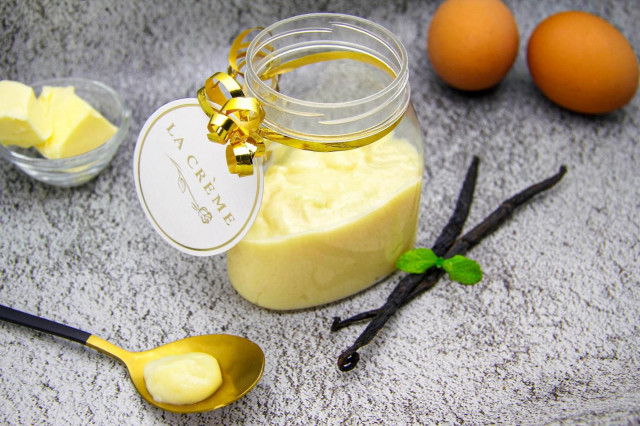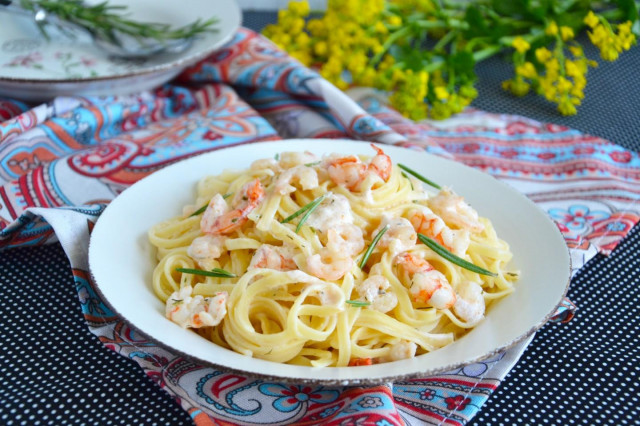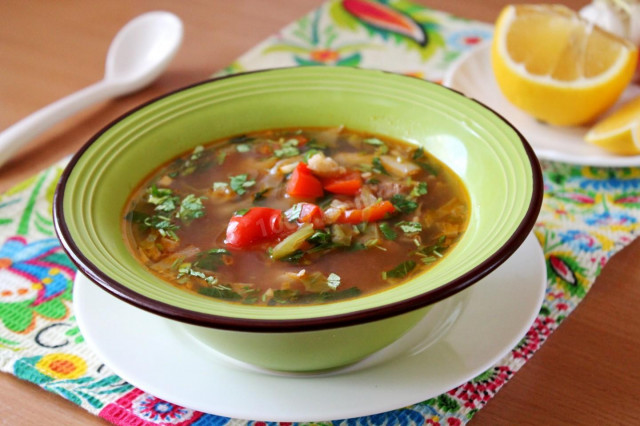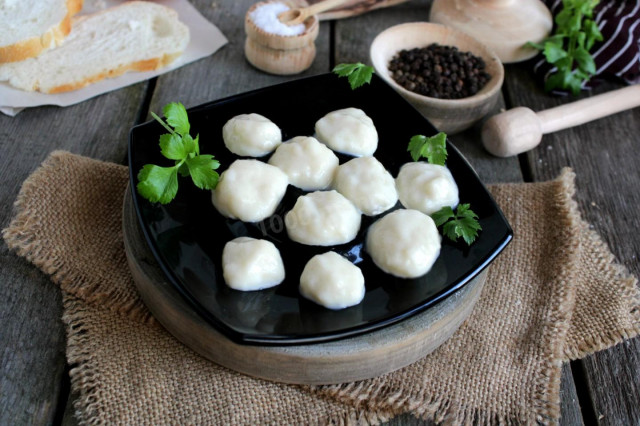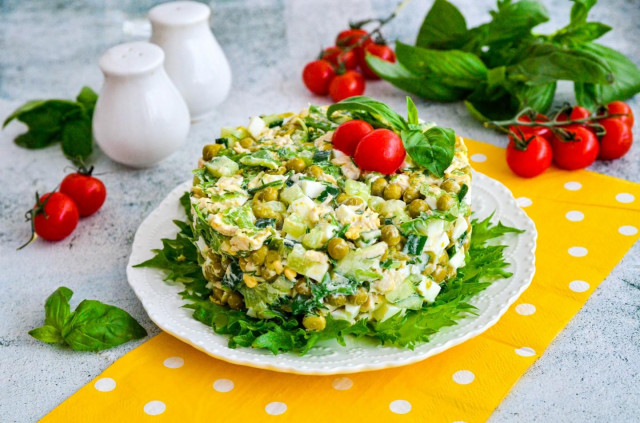Composition / ingredients
Step-by-step cooking
Step 1:
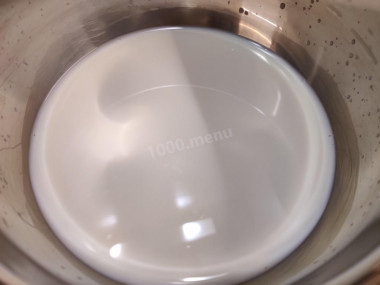
How to make vanilla custard? Prepare the products. Milk and butter should be fresh, high-quality and natural, the taste of the future cream depends on their taste. Choose an oil that complies with GOST. The amount of sugar can be reduced or increased depending on your preferences. Do not be surprised by the addition of salt to the sweet cream — it will only emphasize and make its taste more saturated.
Step 2:
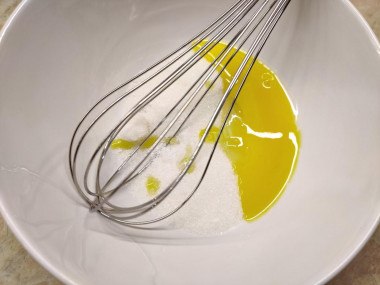
Pour the milk into a saucepan or a small ladle. Put the milk on the stove on a slow fire without a lid. You do not need to boil the milk, so as soon as the first bubbles appear, remove it from the heat. During the heating process, keep an eye on the milk, as it may escape. Take a bowl, pour sugar, vanilla sugar into it, add the yolks. Using a whisk, rub the sugar with the yolks.
Step 3:
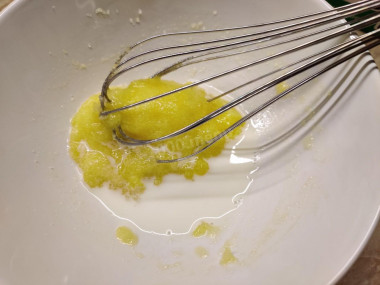
The mass will turn out to be very dense, it will be difficult to knead it. Therefore, add a tablespoon of warm milk to the bowl. It will be easier for you to work this way. You need to try to make the sugar grains dissolve in the cavity. Then the structure of the cream will be more uniform. Warm milk will make it faster.
Step 4:

Add wheat flour to the future cream. Mix the mixture thoroughly with a whisk so that there are no lumps.
Step 5:
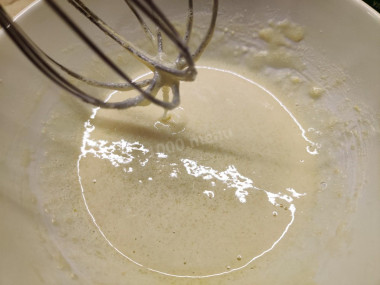
This is how the future custard should look at this stage.
Step 6:

Start adding hot milk to the cream in small portions, mixing the mixture thoroughly with a whisk. Fully introduce the milk in three to four steps.
Step 7:
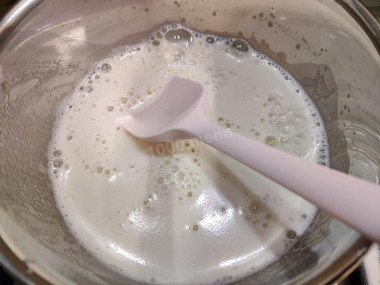
Then pour the cream into the same saucepan in which the milk was heated, and, with constant stirring (this is very important!!!) bring it to a thickening over low heat. If you leave the cream for a long time without stirring, it risks going into lumps and burning to the bottom, which will be irretrievably spoiled.
Step 8:
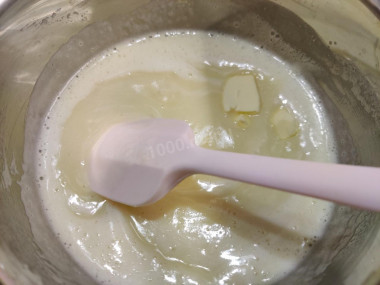
Bring the cream to such a consistency that it holds well on the cooking spatula. It took me about five minutes to cook it for this. Remove the cream from the heat, then add salt and butter to it at room temperature. Stir the cream until completely smooth.
Step 9:
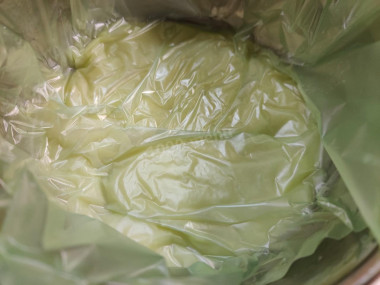
Cool the cream — first at room temperature, then in the refrigerator. After cooling, it will become thicker. In order to prevent a crust from forming on the surface of the cream, I recommend covering it directly in a saucepan with an ordinary thin cellophane bag (or food wrap) in contact — that is, as tightly as possible to the surface of the cream. The cream is ready. bon appetit!
Be sure to wash the eggs before use, as even the seemingly clean shell may contain harmful bacteria. It is best to use food detergents and a brush.
How do I know if an egg is fresh? Break it into a separate container. First of all, there should be no unpleasant smell. The protein of fresh eggs will be transparent and clean. The yolk should not spread and will be shiny, convex, homogeneous.
Important!
To make sure the custard turned out, follow the simple rules:
- Let the base of the cream thicken when cooking (the flour should be brewed, but make sure that the future cream does not burn and there are no lumps).
- The brewed flour mixture must necessarily cool down, if you add oil to the uncooked mass, the oil will melt and the cream will not rise.
- Butter for cream should be of high quality. Low-quality oil can have a bad effect on the consistency of the cream, make it liquid.
Caloric content of the products possible in the composition of the dish
- Whole cow's milk - 68 kcal/100g
- Milk 3.5% fat content - 64 kcal/100g
- Milk 3.2% fat content - 60 kcal/100g
- Milk 1.5% fat content - 47 kcal/100g
- Concentrated milk 7.5% fat content - 140 kcal/100g
- Milk 2.5% fat content - 54 kcal/100g
- Whole durum wheat flour fortified - 333 kcal/100g
- Whole durum wheat flour universal - 364 kcal/100g
- Flour krupchatka - 348 kcal/100g
- Flour - 325 kcal/100g
- Granulated sugar - 398 kcal/100g
- Sugar - 398 kcal/100g
- Butter 82% - 734 kcal/100g
- Amateur unsalted butter - 709 kcal/100g
- Unsalted peasant butter - 661 kcal/100g
- Peasant salted butter - 652 kcal/100g
- Melted butter - 869 kcal/100g
- Salt - 0 kcal/100g
- Egg yolks - 352 kcal/100g
- Vanilla sugar - 379 kcal/100g

